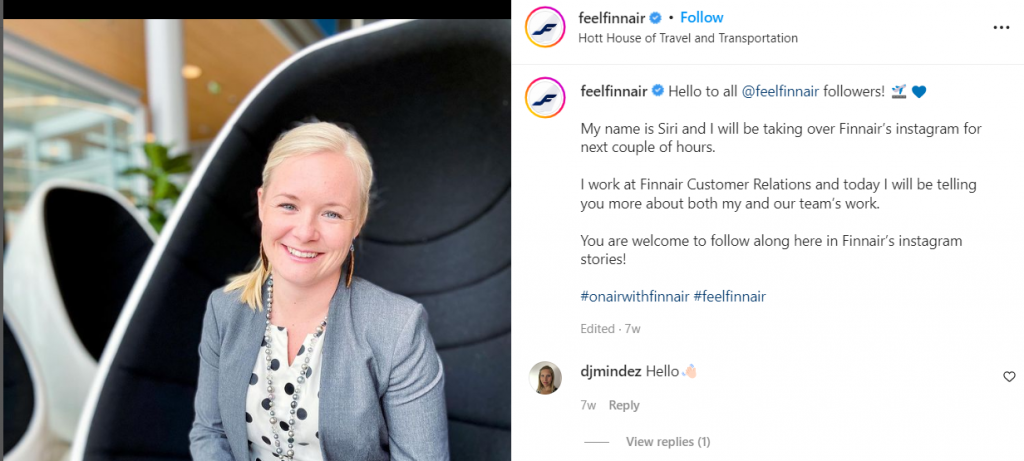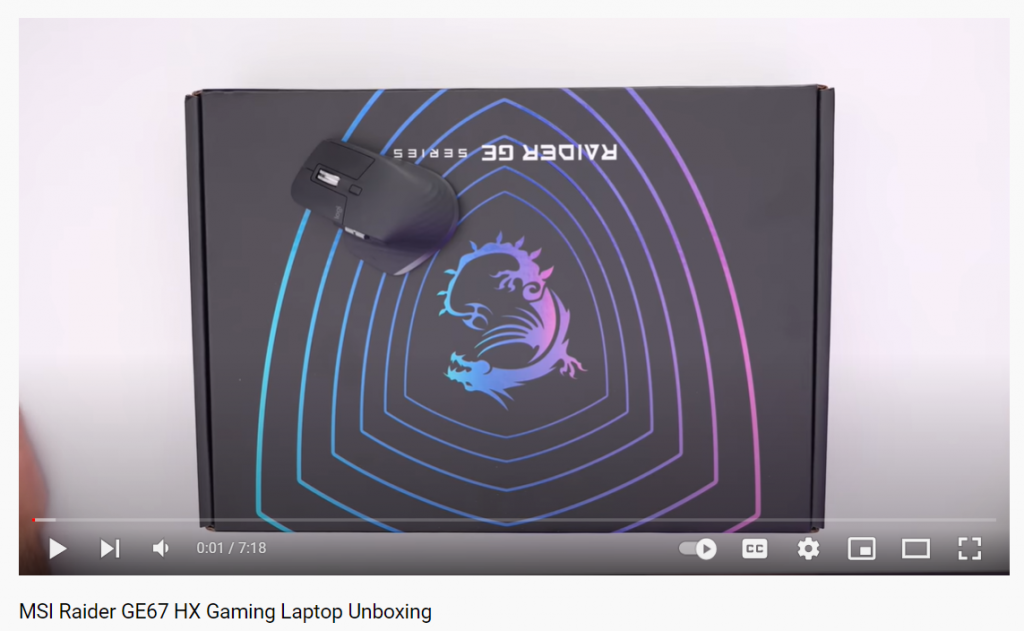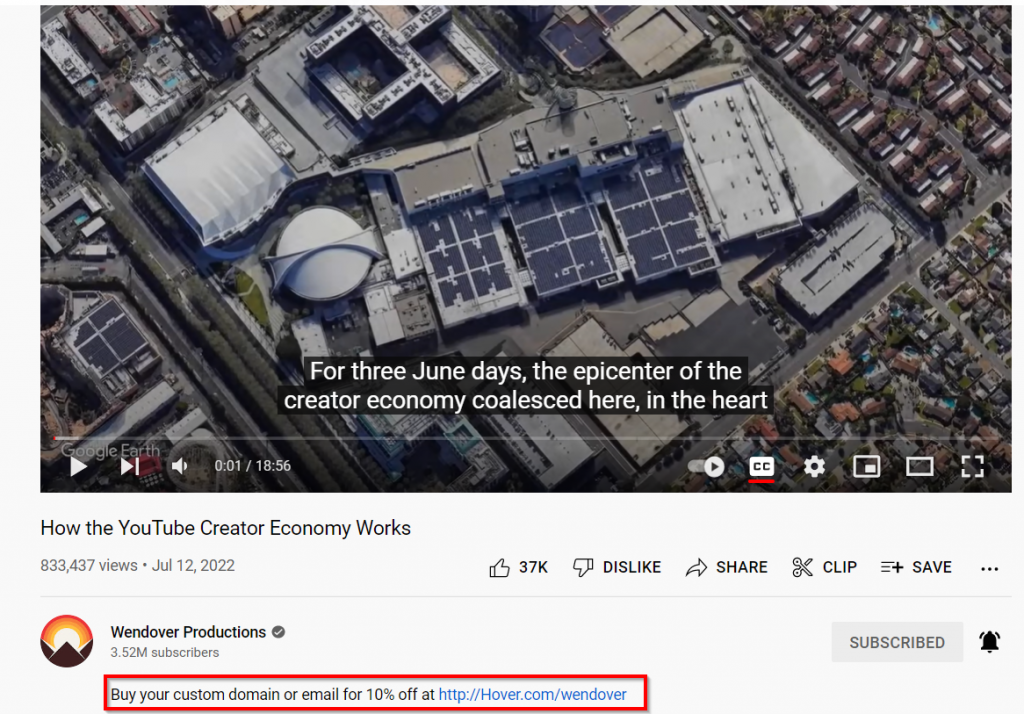Influencer Marketing vs. Traditional Marketing [Full Comparison]
Over the past few years, you might have noticed the influx of influencer marketing campaigns, which brands increasingly use for the sake of precise targeting and authentic promotions. But does that mean that traditional marketing is dead and you should ignore it?
Not really. To understand why, let’s go through our guide that will talk about both types of marketing and shed light on their specificities and differences.
What is Influencer Marketing?
Influencer marketing is a sub-type of digital marketing where companies collaborate with digital content creators who promote their products or services in exchange for compensation in the form of payments or product gifts.
This discipline is growing rapidly, with a yearly rate of 47% and a projection to reach $16 billion by the end of 2022.
Alright, we have an idea of what influencer marketing is about, so let’s move on to introducing its counterpart.
What is Traditional Marketing?
Traditional marketing is a broad term for marketing channels outside the digital world. We are talking about television, radio, newspapers, and other media.
The world has gone digital, and so did marketing. However, traditional marketing is still relevant and many companies, including those that produce digital goods (e.g., Microsoft), still use traditional marketing channels as part of their marketing strategy.
As we have introduced traditional marketing, too, it is time to explore the benefits and downsides of both types of marketing, and we begin with influencer marketing.
Key Advantages and Disadvantages of Influencer Marketing
Although it might seem that marketing on digital media is the more developed approach with lots of advantages, it is not entirely true. Influencer marketing has both pros and cons, and we have gathered the main three ones of each below:
Influencer marketing advantages
- More niche relevant: if an influencer specializes in a particular niche, they have an audience with specific needs and interests that brands can target.
- People trust influencers: creators enjoy a high level of trust and authority among their followers, thanks to the authentic content they make. This creates social proof and a word-of-mouth effect.
- More cost-versatile: you have a wide choice ranging from very small and cheap influencers to mega-influencers and celebrities with greater reach.
To be able to reap all these advantages and speed up collaborations with influencers, you need to be able to write a highly detailed brief so there’s less back and forth communication and the influencer can create flawless content straight away. A tool that is excellent for creating easy influencer brief templates is Insense – their interactive brief automatically adjusts to your selections so you don’t miss a thing.
The benefits of influencer marketing look promising, but let’s look at the other side of the coin, too.
Influencer marketing disadvantages
- Finding the right influencer can be hard: you need to check if you’re targeting the right audience, the cost-effectiveness of such a collaboration, and many other aspects when choosing a relevant influencer.
- Can be risky: if you fail at delivering authentic content or the choosing the right influencer, you can easily burn your marketing budget.
- Content overload: users sometimes get overwhelmed by the amount of content they get online, making it hard to reach them.
With the pros and cons of influencer marketing clear to us, let us see what traditional marketing has to offer.
Key Advantages and Disadvantages of Traditional Marketing
Like influencer marketing, traditional marketing is not a perfect and risk-free option either. Here are the advantages and disadvantages of this form of marketing.
Traditional marketing advantages
- Familiar to older audiences: the older generation prefers consuming content on traditional media like TV, and radio, making them hard to reach via digital channels.
- Memorable: while remembering a digital ad can be challenging considering that it can get dissolved in other content surrounding it, a well-done TV ad will stick in your head with ease.
- Can establish credibility: advertising on traditional channels involves lots of creative work and expenses, increasing the credibility and prestige of your brand.
The benefits seem to be clear, but what about the drawbacks?
Traditional marketing disadvantages
- Little to no control over audience targeting: there are no analytics and cookies in traditional channels, and you cannot reach your target audience as precisely as in digital marketing.
- Can be costly: traditional channels operate on a scale. For newspapers, you cannot buy traditional ads for only 1000 of the millions of copies the outlet will print on that day (unlike banner ads on websites). You will have to appear on all of them and pay accordingly. Therefore, traditional approaches are quite costly.
- Hard to measure: unlike the digital world of trackable links and UTM tags, your capacity for tracking and measuring performance with metrics here is minuscule.
As we are aware of the pros and cons of both types of marketing, we can start discussing them in more detail. Let us start with influencer marketing.
5 Types of Influencer Marketing Campaigns
Both marketing teams and the social media influencers heavily bet on the creativity in their campaigns. Being creative is important in influencer marketing as making compelling content marketing deliverables results in more conversions and a high return on investment.
Although you are free to devise your own format with the creator, there are some well-known, established, and tested types of campaigns you can employ, especially if you have no prior experience with influencer marketing. We’ve put together five of these campaign types for you here.
Type #1: Giveaways and sweepstakes
Giveaways are much older than you thought, with their origin believed to be dated back to the mid-19th century. But between its origin and now, giveaways have come a long way.
The modern process usually involves the sponsor (your company in this case) giving away its products for free to several select followers of the influencer whom the sponsor and the creator choose either randomly or based on competition.
Followers usually enter the giveaway after they perform a specific action such as commenting, sharing the post, filling in a form, etc.
To understand giveaways better, let us look at a real example of it.

We are looking at a post by sports car enthusiast and micro-influencer Fipeux on his Instagram channel with over 100k followers. In the post, he is giving away a set of sports car rims by vehicle part retailer Quartier Des Jantes. To qualify for the giveaway, you need to follow both the influencer and the sponsor, like the post, and mention three of your friends in the comments section.
All the rules for entering the giveaway aim to increase the sponsor’s follower count and boost its brand awareness among the sports car lovers in Fipeux’s audience.
Type #2: Social media takeovers
Social media takeovers are another tried method of collaborating with an influencer.
In this case, instead of the influencer talking about your brand’s message or products on their page, they are taking over the control of your own social media channels (e.g., Facebook, Tiktok, or Instagram) and posting their content on your channel.
This method serves as a great way of increasing the engagement rate of your own social media channels (find more on social media marketing and its difference from traditional marketing in our comparison) and bringing the fans and followers of the influencer to your page.
Here is what the takeover looks like in the case of Finnish national air carrier Finnair.

Many Finnair employees are active Instagram influencers with their own fanbase, and this is something that Finnair decided to benefit from and include in its Instagram marketing strategy. They asked their influencer employees to take control of their channel and post their content there.
Thanks to this, Finnair gave their page a bit more personal and human feel and attracted the followers of their employees to their channel.
Type #3: Sponsored posts
This type of collaboration is straightforward – influencers directly and openly advertise your products or brand on their channel.
Despite the overall shift towards subtly integrating promotions into the content of the influencer, sponsored content is still quite popular. Around 77% of marketers who run paid promotion campaigns on social media have done sponsored posts with influencers.
One crucial aspect of sponsored posts is that many legislations (e.g., the FTC for the United States) require the influencer to publicly disclose that their content includes a paid promotion.
Influencers usually use hashtags like #sponsored or #sponsoredpost to indicate a collaboration.
Now let’s look at an example of a sponsored post.

Here we have nano-influencer Monika, who has partnered up with American female sports apparel brand Jelenew to promote their bike shorts.
Type #4: Unboxing and product reviews
Unboxing videos are highly popular on video-sharing and social media platforms, with a year-on-year growth of around 57% reported in 2015 alone.
This type of influencer marketing content usually involves the creator receiving a brand new product, taking it out of its packaging in front of the camera while commenting and sharing their opinions about the product and the unboxing experience.
Some unboxers also use the product for a short time after receiving it and share their experience of using it.
Unboxing videos have become so popular that, aside from influencers including this type of content into their arsenal, there are also dedicated channels that do unboxings exclusively.
Our example is one of these channels.

The channel in question is Unbox Therapy, with an 18.2 million audience. Its host is Lewis Hilsentegerm who constantly receives sample products from different tech manufacturers as a gift with a request to unbox and review these products on his channel.
Type #5: Discount codes
Apart from direct sponsored posts, there is another similar approach that is popular in the influencer world – offering discount codes.
This is a common tactic when your influencers are also involved in your affiliate marketing program. When providing your influencers with their affiliate links, you can set up product discounts for the followers who click on these links.
This way, you are giving the influencer a great tool and an incentive they can use to drive traffic to your site and earn commissions. Below is an example of a YouTube influencer campaign covering this case.

Wendover Productions is an education YouTube channel with 3.5mln subscribers that posts content on economics, geopolitics, aviation, and logistics.
The channel is in partnership with the online domain marketplace Hover, and, as part of that collaboration, Wendover Productions offers their followers a special 10% discount on domains if they use the link in the video description.
To conclude, these five types of campaigns with influencers are quite common in the industry and have proven themselves effective, so feel free to take advantage of them in your next campaign.
Moving forward, let us look at the examples of traditional marketing campaigns.
5 Types of Traditional Marketing Campaigns
Many of us think that the era of traditional marketing is over, and digital marketing channels have come to fully replace it. However, despite many such claims, traditional marketing is alive and doing very well with a prediction of growth in 2022.
Therefore, it is worth knowing some of the most prominent traditional marketing channels and considering them in your strategy.
Here are five of the most common ones.
Type #1: Print media
Print media, as the name suggests, refers to any type of content people consume from a printed source. Some examples of print media are newspapers, journals, billboards, and brochures.
In the case of print media, your main approach is direct traditional advertising on special places that the media outlet has dedicated for such content. What you are going to show on that print ad space is mostly up to you (given that you follow the outlet’s guidelines).
Print media has remained a valid channel for marketing thanks to its main benefit – the increase in credibility you are getting, especially among the potential customers of your older audience.
Type #2: TV advertising
Our second traditional approach is running TV commercials.
This type of promotion is not only popular but also well-respected as many brands and companies compete for the best advertising they have made in prestigious championships such as the Cannes Lions International Advertising Festival.
Apart from buying ad space during a show and demonstrating your video ads on TV, there are alternative approaches you can also take. Some of them include:
- Product placements: when the creators of the shows naturally integrate your brand or products into their content. A great example of this is Apple with its MacBooks which were the primary computers of many Hollywood movies.
- Brand integration: in this case, your product becomes an essential part of the show itself. This type of promotion is common with game shows where the main prize is a product (e.g. a car) of a brand that has sponsored them.
- Overlays: this is a more simple type of promotion that appears as a static banner under the video with your ad on it.
The main advantage of using television is its mass reach and ability to evade digital advertising problems such as adblockers. Some channels can reach tens of millions or even more.
Type #3: Radio advertising
That’s right, radio is still alive too. In fact, radios are much more popular than you could possibly imagine. A Nielsen study suggests that almost 92% of adults listen to the radio at least once a week in the United States.
Nielsen attributes most of this listening to local radio stations and car radios. It means you can use radio ads best for promoting any local business with a physical location.
Type #4: OOH
OOH stands for Out of Home advertising. This is a broad category of advertising media that technically includes everything that you can find outside (hence, out of home).
Some examples of OOH are ads on bus stops, metro stations, airports, street furniture, and more.
The main benefit of this type of advertising is its high visibility. Imagine you are waiting for your bus or the metro train, and there is an ad banner in front of you. Inadvertently, you will start looking at the content in the ad as a means of entertaining yourself while the bus or train is on its way.
Type #5: Events
Finally, our last type of traditional marketing is events. We can split this category into two types:
- Events organized by you: these can be anything, from presentation events to professional conferences in your field. A notable example is Apple’s Worldwide Developers Conference, where they gather Apple developers and partners from across the globe and present their new products.
- Events organized by others: in this case, you are participating in events that various organizations and associations from your niche have arranged, such as conferences, trade shows, and fairs. For instance, if you are a game developer, you might consider showing up at the E3, a gaming trade show held annually in Los Angeles.
In both cases, taking part in shows gives you brand exposure and access to a relevant audience with interests matching your products.
Traditional marketing is not dead, and you can consider using one or more of the types described above as part of your marketing efforts.
As we have listed the types of both digital and traditional marketing, it is time to understand which one is better.
Influencer Marketing vs. Traditional Marketing: Which is Better?
The main difference between influencer marketing and traditional marketing is that influencer marketing works best on the younger generation (e.g., the millennial demographic group) that is more prone to consuming digital content, while traditional marketing is capable of targeting older audiences who are more used to physical media (we shared some stats confirming it a bit earlier).
Is one better than the other? Not really. Each one comes with its own set of advantages and drawbacks, and using one exclusively and ignoring the other might not be the most effective approach.
In fact, many companies use a combination of both approaches. Notable cases are tech manufacturers like Samsung and Apple, who will both place banners in your city for their latest smartphones and ask an unboxing YouTube channel to review them.
Another point worth noting is that the effectiveness of traditional marketing versus influencer marketing depends on the products you are promoting too.
If you are advertising a startup UX design software, you might want to go with YouTube Key Opinion Leader Marketing and also consider using a local radio channel to promote a car repair shop.
Now Over to You
Although influencer marketing trends are all over the place now, as it is a newer concept, this modern marketing method is not necessarily superior to traditional marketing. Each type has its advantages and disadvantages and fits best for specific cases and products.
This guide was one of the many covering the topic of marketing. For more, check out our blog.

Sona Kalantaryan is a senior digital marketer with a creative past. Big fan of high cinema and well-optimized landing pages. She authors guides by sharing the best practices and does it the right way!
